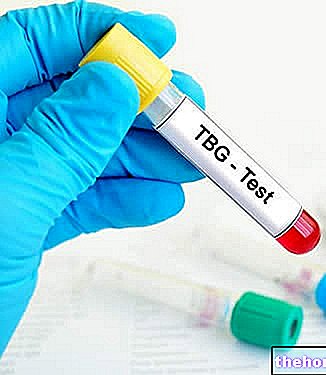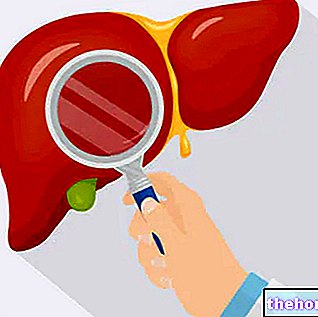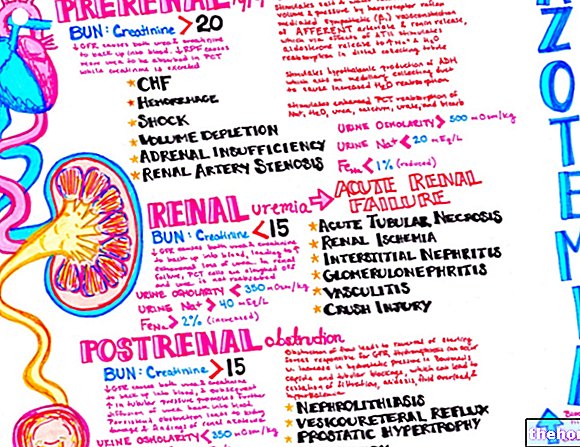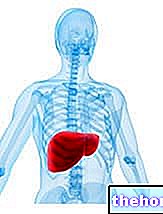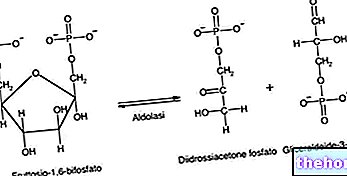Definition and normal values
The term hypernatremia - or hypersatremia - identifies an increase in sodium concentrations in the blood, above what are considered normal values:

- normal sodium or natriemia: 135-145 mmol / L *
- hyponatremia: < 136 mmol / L
- hypersatremia: > 146mmol / L
- mild hypersatremia <155 mEq / L
- severe hypersatremia > 155 mEq / L
* millimoles of sodium per liter of blood, also expressed in mEq / L
To understand ... the role of sodium in the body
Sodium represents the main electrolyte of the extracellular fluid: 90% of the total body sodium is contained in the extracellular compartment, thanks to the action of the enzyme Na + - K + ATPase (which actively transports sodium out of the cell).

Sodium is also involved in the transmission of nerve impulses, in cell exchange and in muscle contraction: according to this, we understand how a condition of hypernatremia can upset all these functions that the body must fulfill.
- PLEASE NOTE: Since sodium is freely distributed between plasma and interstitial fluid, the concentration of sodium in the blood is the same as that of extracellular fluids. In other words, if the sodium in the blood increases, the concentration of sodium in the extracellular spaces also rises.
- Since the cell membrane is freely permeable to water, when the sodium concentration increases in the extracellular component, then the water moves from the intracellular to the extracellular compartment to re-establish the osmotic equilibrium.
- To stem the movement of water from the intra to the extracellular compartment it is necessary to increase the volume to dilute the sodium, and at the same time increase the urinary loss of the mineral.
- Ultimately, plasma sodium concentration is an indicator of the state of the intracellular volume, whereby hyponatremia means cellular hyperhydration while hypersatremia means cellular dehydration.
Causes
Hypernatremia is a very frequent laboratory finding in clinical practice, even if, fortunately, in most cases, very high levels of hypersatremia are not reached. The latter, in fact, are particularly dangerous and lethal in a good percentage of cases.
Hypernatremia, in general, is not caused by an excess of sodium, but by a relative deficit of body water which leads to a water depletion of the blood with concentration of the mineral. In some cases of hypernatremia the amount of sodium in the blood is even lower than normal, but the volume is reduced to the point of creating hypernatremia.
Under normal conditions, even a modest increase in sodium above the base threshold provokes the stimulus of thirst; the consequent intake of water leads to the correction of the sodaemia values.
Hypernatremia is more common among children and the sick (who depend on others for water supply), among the elderly (reduced effectiveness of the thirst mechanism), among subjects with an altered mental state and among those who do not care to the daily intake of water by exaggerating with that of sodium. Hypernatremia, in general, is worsened by those diseases that cause a loss of fluids, such as diarrhea or vomiting, and by infections in general.
An increase in blood sodium levels can therefore occur due to:
- true (absolute) increase in sodium:
- increased sodium intake with the diet compared to water → hypervolemia
- excessive sodium retention in the kidney → hypervolemia
- insufficient intake of pure water with the diet (cause + common) → euvolemia or slight hypovolemia
- loss of water and hypotonic fluids (dehydration) → hypovolemia
In the first case the absolute blood quantity of sodium increases (primary hypersatremia), while in the second the blood sodium increases only in relative terms (it is quantitatively equal or even lower, but being lower the volume and body water, it is more concentrated).
Classification
The classification of hypernatremia into three main classes allows the easier identification of the underlying causes, providing useful indications for therapeutic interventions:
- hypervolemic hypernatremia = increase in total body sodium and lower increase in total body water: it is caused by an excessive intake of sodium compared to water
- euvolemic hypernatremia = decrease in total body water: it is caused by a lack of intake or loss of pure water
- hypovolemic hypernatremia = greater loss of total body water than sodium loss: it is caused by the loss of hypotonic fluids
Other articles on "Hypernatremia"
- Hypovolemic, Normovolemic, Hypervolemic Hypernatremia
- Hypernatremia: Symptoms and Therapy

